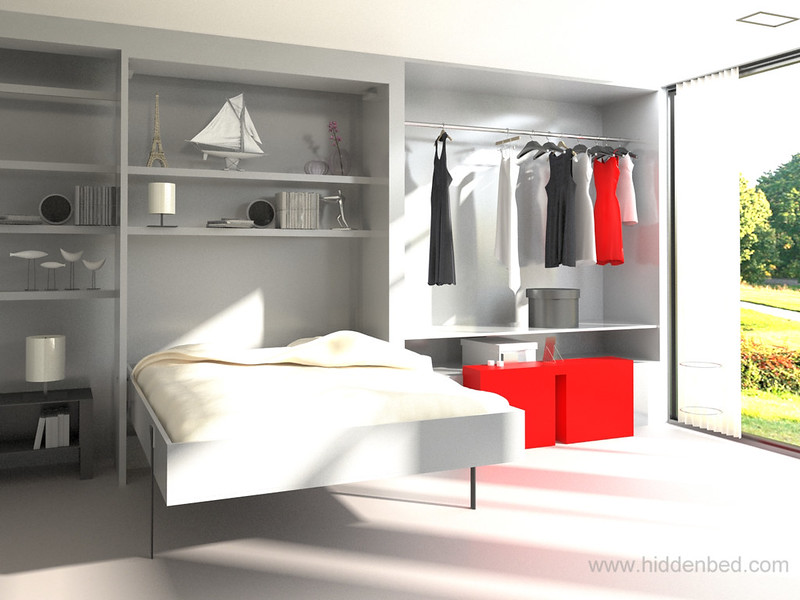Fitted Wardrobes: Maximize Space and Elevate Style
Discover how fitted wardrobes transform bedrooms by combining tailored storage with attractive design. This guide covers styles, materials, internal layouts, installation steps, and realistic pricing to help you choose custom fitted wardrobes that optimize space, boost resale value, and keep your room tidy and stylish.

Fitted Wardrobes: Maximize Space and Elevate Style
Fitted wardrobes are an excellent way to turn underused bedroom areas into efficient, stylish storage. Unlike freestanding units, these built-ins are crafted to the exact dimensions of your room, delivering a seamless look that can make a space feel larger, cleaner, and more organized. They also reduce dust gaps and simplify cleaning, improving the overall hygiene of your bedroom.
Picking the right style for your space
Choosing the wardrobe style starts with your personal taste and the room’s aesthetic. For modern interiors, consider minimal designs with handleless doors and smooth finishes that emphasize clean lines. Traditional preferences are better served by paneled doors, decorative handles, and warm wood tones.
Material choice strongly influences the final effect. High-gloss laminates reflect light and create a contemporary, bright feel. Natural wood veneers add warmth and timeless appeal. Mirrored door panels are a popular dual-purpose option: they visually expand the room while providing a practical full-length mirror for dressing.
Color selection is another vital decision. Light shades help small rooms appear more open; darker tones add depth and a touch of luxury. You can match the wardrobe to wall colors for cohesion, or pick a contrasting hue to make a bold focal point.
Planning internal storage that works for you
Aesthetic choices matter, but the interior layout determines how useful the wardrobe will be day to day. Start by listing what you need to store and how often you use each item. Most built-ins work best with a mix of hanging space, shelving, and drawers.
For hanging items, use double hanging rails where possible for shirts and shorter garments, and allocate single higher rails for dresses and coats. Adjustable shelves provide future flexibility as clothing and storage needs change over time. Deep pull-out drawers suit folded clothes and larger accessories, while shoe racks or dedicated shoe drawers keep footwear neat and accessible.
Specialized fittings raise the convenience level. Pull-down hanging rails make high storage reachable. Pull-out trouser racks, and tie and belt organizers stop small items becoming a mess. For jewelry and delicate accessories, shallow compartmentalized drawers or dedicated jewelry trays prevent tangling and protect valuables.
The design and installation journey
The fitted wardrobe process usually begins with an on-site consultation. A designer will measure the area, talk through storage requirements, and review style preferences. Many companies provide 3D renders to help you visualize proportions, finishes, and internal arrangements before committing.
Manufacturing typically takes place off-site, where panels and components are cut to the agreed specifications. Producing sections off-site helps ensure accuracy and reduces disruption at home. Installation is generally quick: a simple wardrobe may be completed in a day, while larger or more complex systems can take two days or slightly longer. Professional fitters assemble the sections, secure them to walls, and install internal fittings such as rails, drawers, and shelves for a precise finish.
Are fitted wardrobes worth it?
While fitted wardrobes often require a higher initial investment than freestanding furniture, their advantages frequently justify the cost. They maximize usable space, often creating more functional storage area in awkward nooks and alcoves. This optimized layout appeals to buyers and can add perceived value if you sell your property.
Durability is another consideration. Well-made fitted wardrobes tend to outlast mass-produced alternatives, meaning they rarely need replacing and can be a long-term solution. With sensible maintenance, they provide years of reliable performance and continued visual benefit to your bedroom.
Typical costs and what affects price
Costs for fitted wardrobes vary widely depending on size, materials, internal fittings, and complexity of the design. Below is a general guide to potential price ranges.
| Wardrobe Type | Size | Estimated Cost Range |
|---|---|---|
| Basic Fitted Wardrobe | Small (1-2 metres wide) | $1,000 - $3,000 |
| Mid-Range Fitted Wardrobe | Medium (2-3 metres wide) | $3,000 - $6,000 |
| Luxury Fitted Wardrobe | Large (3+ metres wide) | $6,000 - $15,000+ |
Prices are approximate and may vary by location, supplier, materials, and custom options. Independent research and multiple quotes are recommended before making a decision.
Final considerations and tips
Before you commit, measure carefully and consider future needs. Think about seasonal storage, changes in wardrobe habits, or if you might repurpose the room. Request detailed drawings and confirm all guarantees and lead times. Where possible, view previous installs or read customer reviews to assess workmanship and service.
Fitted wardrobes blend practicality with style. By selecting the right finishes, internal layout, and a reputable fitter, you can create a bespoke storage solution that keeps your bedroom tidy, increases usable space, and enhances the overall appeal of your home.






